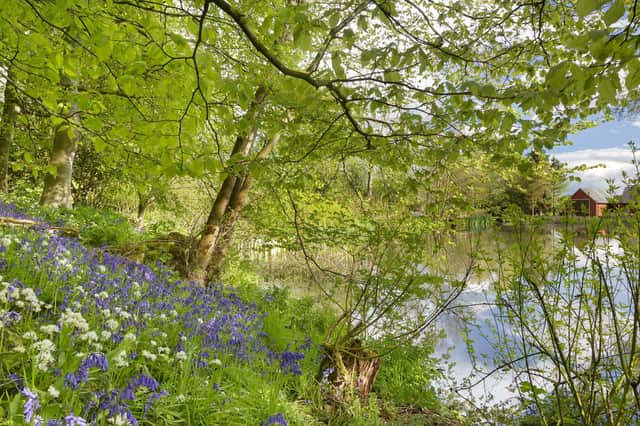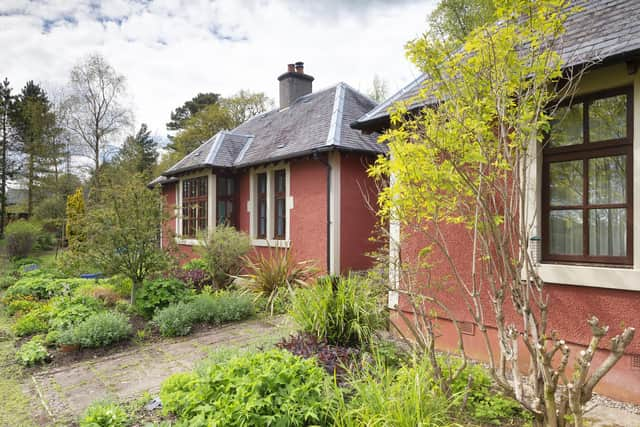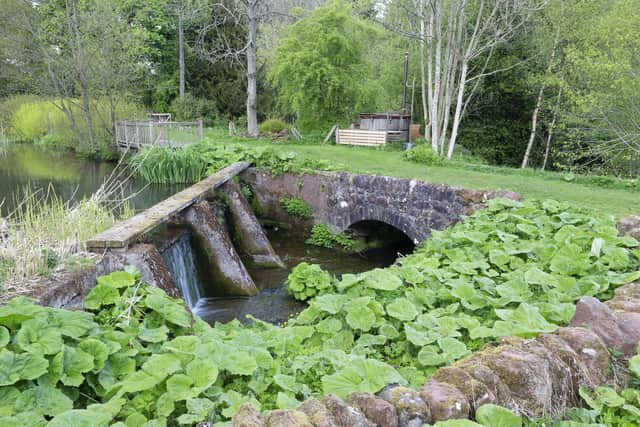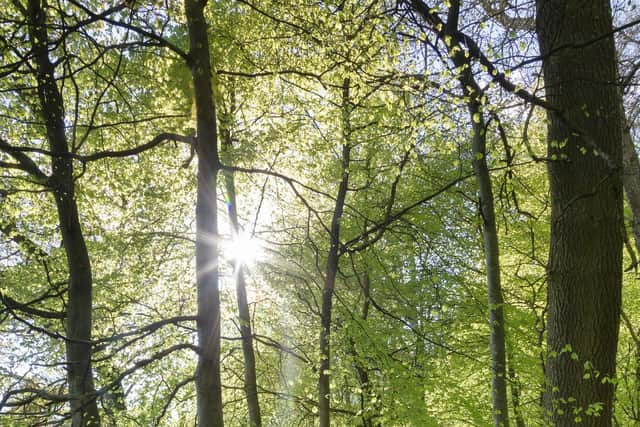'I was very nervous, we had experience of an allotment and a small back garden' How one family restored ten acres of Scots woodland


She explains: “I was very nervous, we had an allotment and a small back garden but I didn’t have any specialist knowledge of botany or horticulture, so I approached it as a journalist.”
She and her husband, Ray Perman, then a business journalist and publisher, packed their three sons “protesting in the back of the car” and embarked on what would prove to be a life-changing expedition. “It was the most marvellous experience. We fell in love with woodland gardens, but we had no idea what we would be letting ourselves in for.”
Advertisement
Hide AdAdvertisement
Hide AdIt took three years to find the right woodland of their own but in the meantime Fay prepared meticulously, taking short courses on woodland management, land conservation and wildlife.


Eventually she decided a 10 acre woodland would best suit their needs. “In 1993 a ruined cottage with 10 acres in Perth and Kinross was advertised in The Scotsman.” Surrounded by farmland Pond Cottage sat at the centre of a woodland.
Fay and Ray were instantly captivated. The lozenge-shaped piece of land, once part of the Kinross Estate, boasted a large stream-fed pond regulated by a 19th century sluice, and two disused quarries – one serving as an old rubbish dump. Stone from one of the quarries was thought to have been used in the construction of Kinross House.
“There was no road, no mains power and no mains water or sewerage.”
Work started the following March when, with the help of a grant, a condition of sale was fulfilled by planting a 300 metre boundary hedge with blackthorn, dog rose, hawthorn and holly. A year later Jimmy Loudon, local JCB contractor, built the access road.


That summer they sowed grass seed around the cottage and began adding to the woodland. “We are very exposed from the west winds, and spring doesn’t come until quite late," Fay says, adding that the next thing the couple did was create a shelter belt west of the cottage by planting trees such as oak, ash, birch, gean and Scots pine.
The vision for the woodland garden stemmed from different sources: Dawyck, Benmore, Crarae Garden and Cluny were never far from their minds. “The site determined what might be possible. The view of Ben Lomond, wind and exposure were all big elements in decision-making.”
Fay’s work as a freelance writer generated a wealth of information. “Freelance writing on gardens and gardening was a great source of ideas: I wrote and co-wrote editions of RBGE Dawyck and Benmore guide books, edited Friends newsletter and the Botanics magazine."
Advertisement
Hide AdAdvertisement
Hide Ad“I began to develop the idea that we would infiltrate the garden rather than have an onslaught on certain areas.” Nevertheless she soon learnt that: “you have to suppress the rank stuff, including docks, thistles and brambles".


A lasting piece of advice came from the poet and gardener, Ian Hamilton Findlay, who Fay says she was: “very lucky to interview shortly before he died. Little Sparta is an even more challenging site than Pond Cottage. I asked him about his planting. I took heart from his reply: 'I plant what grows.'”
Every available moment was spent at Pond Cottage. During the hot summer of 1995 the family camped in the newly grassed clearing at the old quarry and cooked over bonfires, while watering the young shelter belt of birch, rowan, Corsican pine, holly and willow from the newly connected mains water supply.
An early surprise was the beech wood, planted when the site was part of the Kinross estate. Here, bluebells and wild garlic grow among dog’s mercury and water avens, with their delicate bell-shaped flowers. “We were so excited that by these indications of ancient woodland,” Fay says. “All signs that trees have been here for centuries.”
The pond, a former duck flighting pond created by damming a stream, was glorious in all seasons but soon proved complicated to look after, and weed-prone. “On-stream ponds are difficult to manage, topsoil washes downstream with heavy rain and the silt-trap soon fills up.” Nonetheless it is now healthy enough to support herons, ducks, moorhens, kingfishers and a family of swans who build their nest in early spring, but have been observed by neighbours marching their cygnets to nearby Loch Leven before the moulting season.
Red squirrels began colonising the garden in 2008 and now thrive. There is a badger sett in one of the old quarries and roe deer are frequent visitors. Advice from the RSPB helped establish suitable habitats for birds in the wetland. Ducks, moorhens and cormorants are seen on the pond and once, excitingly, an otter.
A kitchen garden near the house has produced voles as well as vegetables but herbaceous borders filled with rabbit-defying flowers frame views from the cottage: geraniums thrive in competition with frothy pink persicaria rampaging over one area of the garden. Red Rosa moyesii and bright yellow Inula burst in summer, while white stemmed Rubus cockburnianus brightens winter.A generation later Pond Cottage remains a haven to explore, lockdown restrictions permitting.
The Pond Cottage, Milnathort KY13 0SA will be open in the autumn under Scotland’s Gardens Scheme, scotlandsgardens.org
Comments
Want to join the conversation? Please or to comment on this article.